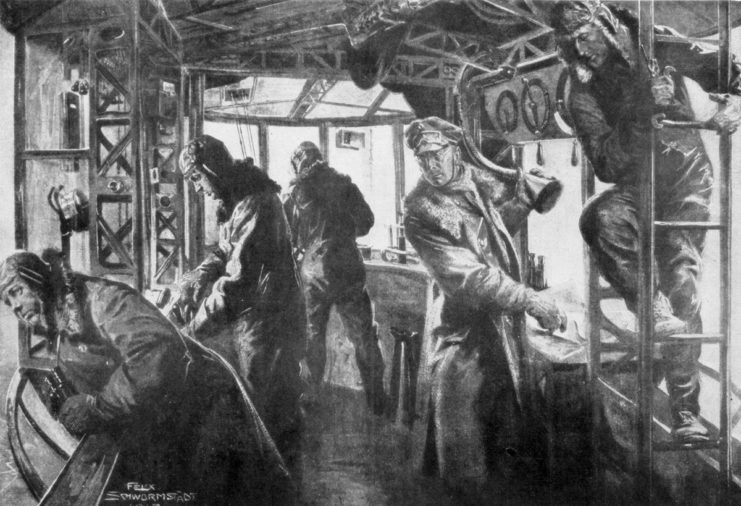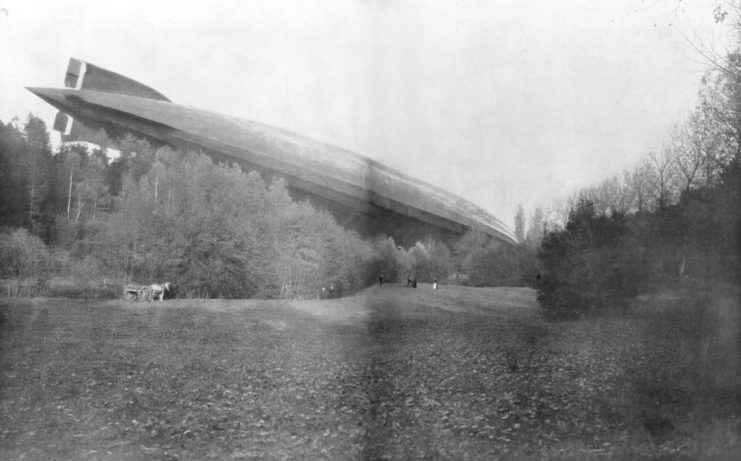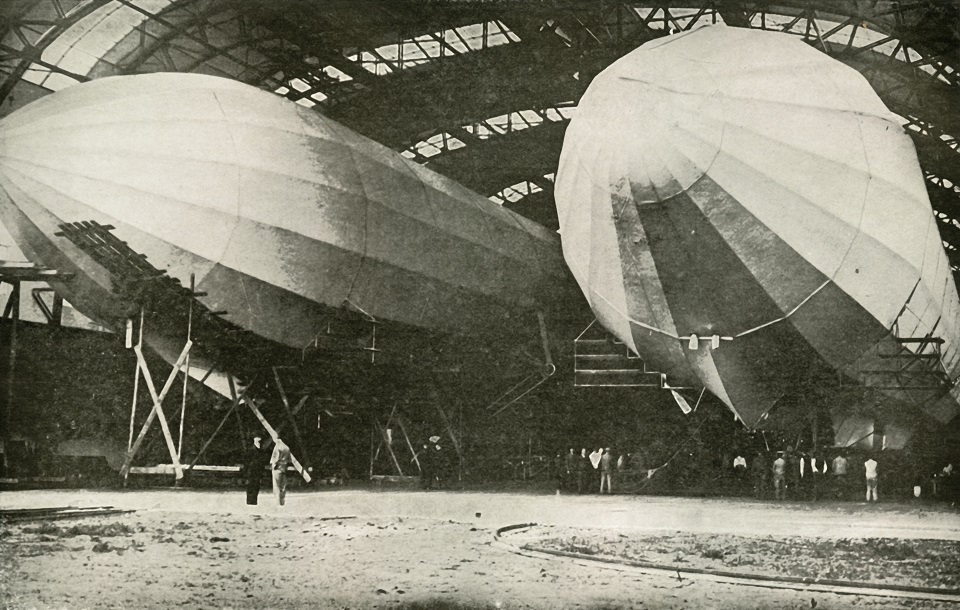A rain of German bombs falling onto London may sound like a scene from the Blitz, but the city was also attacked by Germany during WWI, not by sleek metal-skinned aircraft, but by Zeppelins. Described by Winston Churchill as “enormous bladders of combustible gas,” these ominous lighter-than-air crafts caused 500 deaths in Britain. They also caused chaos on their own people, by denying them of their beloved sausages.
Although there was little evidence that airships were suited to military environments (they weren’t, by the way), there was a great demand for them among the German top brass. The ships could carry far more bombs over a further distance than aircraft, all while mounting defensive machine guns and they were actually quite hard to bring down.
However, unsurprisingly, the airships were still vulnerable to a prepared enemy and proved to be unwieldy, struggling to effectively navigate precisely over targets and lacking accurate bombing techniques.
Even when moored up the airships were thrown around by strong winds, and a few were lost because of poor weather conditions.
The airships had a powerful psychological effect but proved to be a rather lackluster weapon of war, and their use was eventually abandoned.
Beefy machines

These gigantic machines could measure up to 240 meters in length and required immense resources to construct. One of the most important was cow guts. The cow guts were used to make the bags that contained the airship’s gas. The gas is what makes the airships lighter than air.
Because the airships were huge, the number of resources they used was huge too, with each German Zeppelin using around 250,000 cows.
The same material used for the gasbags is also used to make sausages, albeit in a much more precise process. The German authorities were forced to choose between sausages or their airships. As we now know, airships won this logistical tug of war, with the resources once used to make sausages instead being diverted to Zeppelin construction.
An airship could use up to 30 million potential sausages.
During this drive for airship construction, the production of sausages was outlawed in Germany and other occupied territories.
Goldbeater’s skin

The intestinal skin, also known as goldbeater’s skin, is incredibly resistant to tearing yet very thin and light. It has been used for many different things over the centuries but got its name from its use in the production of gold leaf. The skin is placed between layers of gold during gold beating, a process that can thin out many layers of gold separately.
A 1922 report on balloon fabrics for the US National Advisory Committee for Aeronautics highlights how valuable these guts were.
“The collection of the goldbeater’s skins was very systematic in Germany during the war,” the document reads. “Each butcher was required to deliver the ones from the animals he killed. Agents exercised strict control in Austria, Poland and northern France, where it was forbidden to make sausages.”
The intestines normally used to make sausages were wetted, separated, and had the outer membrane peeled away. It was then washed in an alkaline solution and stretched dry. The resulting material is goldbeater’s skin; exceptionally thing, yet strong.
The Germans experimented with other materials to build the gas bags, like rubber, but they were unable to find a way of sealing the bags enough to stop hydrogen, the lightest element in the universe, from escaping.
However, they realized that if layers of goldbeater’s skin were laid on top of each other when wet, they fuse together as they dry. This creates a material that, according to the 1922 report, “for a weight of 130 to 150 g per sq. m, a tightness permitting the loss of only a few liters of hydrogen per sq. m in 24 hours, under a pressure of 30 mm of water.”
As a result, Germany went without sausages in the name of strategic bombing.
